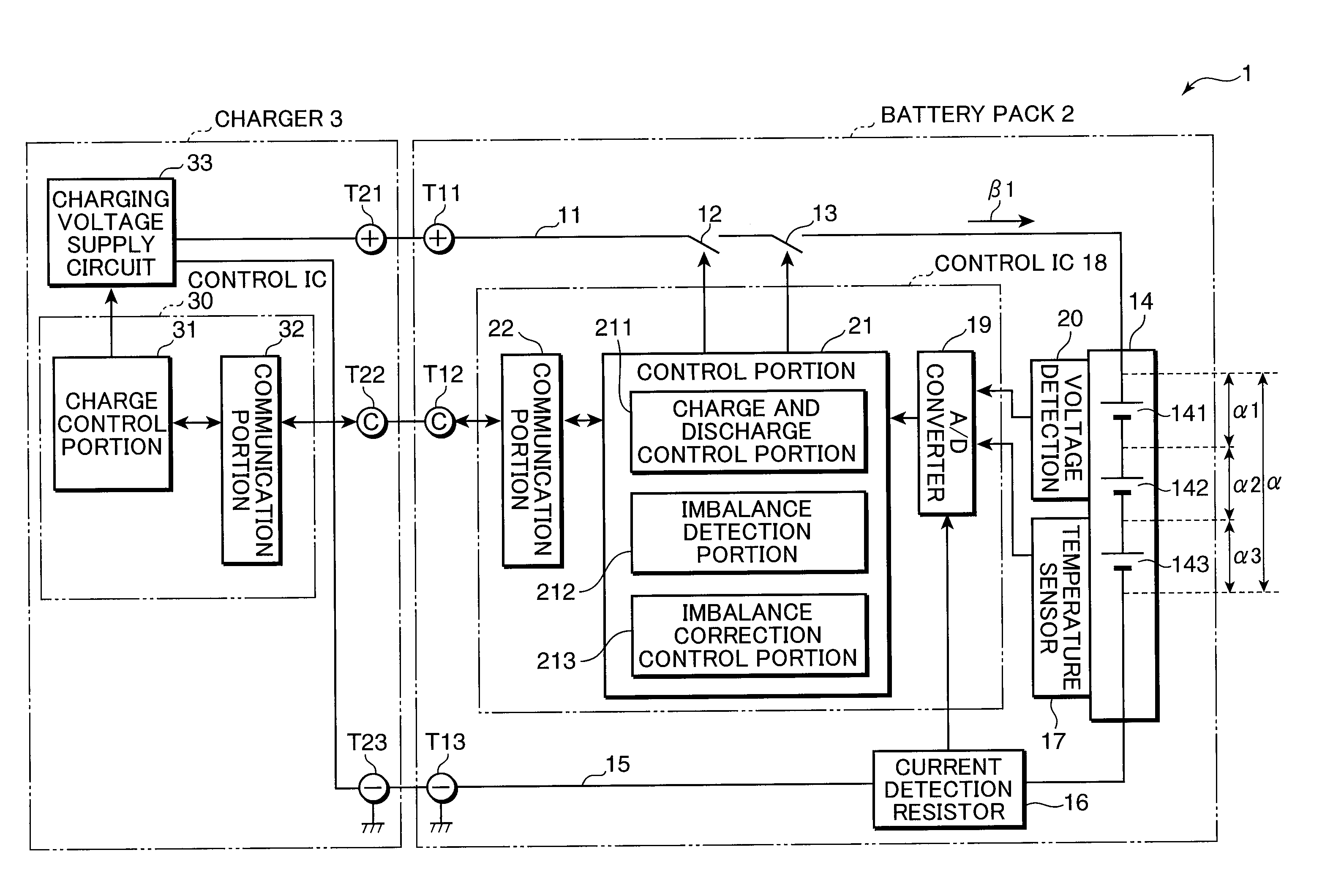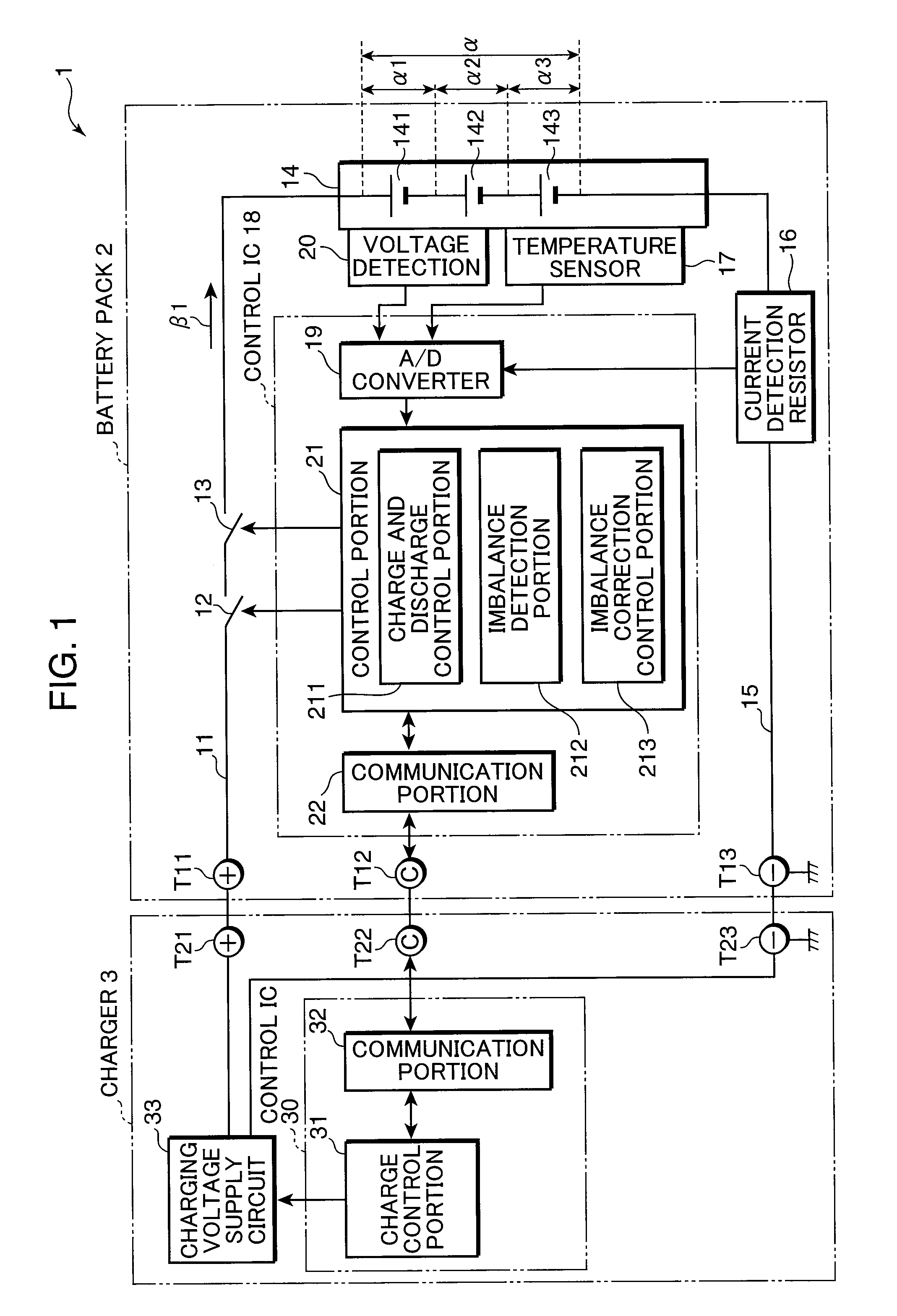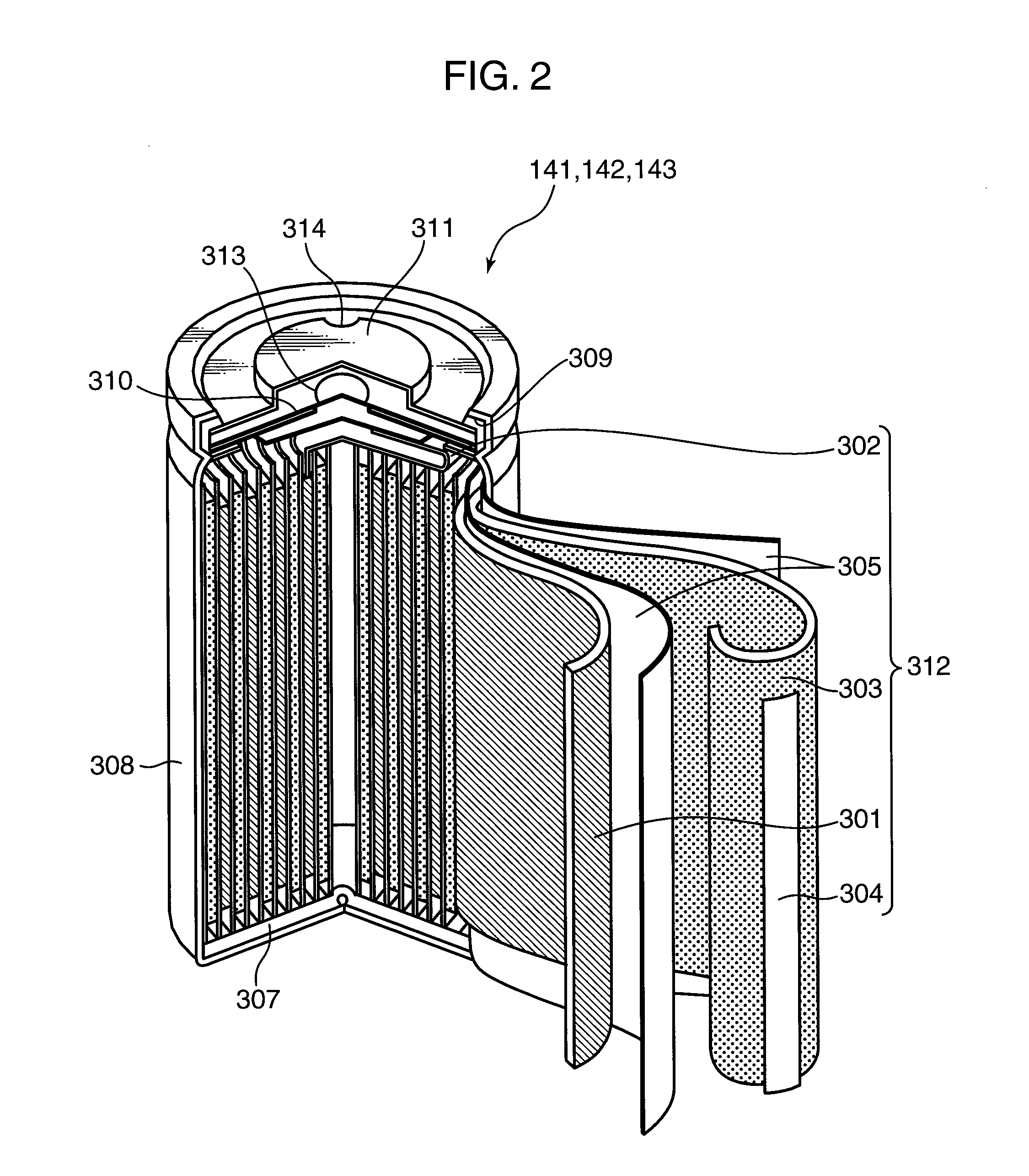Nonaqueous secondary battery, battery pack, power supply system, and electrical device
- Summary
- Abstract
- Description
- Claims
- Application Information
AI Technical Summary
Benefits of technology
Problems solved by technology
Method used
Image
Examples
example
[0177]The inventors made cells A and B having the structure of the electrode plate group 312c shown in FIG. 7. Also, as a comparative example, the inventors prepared a cell C using a resin microporous film having no heat resistance as a separator. FIG. 15 is a view in a tabular form used to describe the configurations of the cells A, B, and C. As is set forth in FIG. 15, for the positive electrodes of the cells A and B, aluminum foil having a thickness of 20 μm was used as the positive electrode current collector 321 and LiCoO2:acetylene black:polyvinylidene fluoride=100:3:4 (weight ratio) were used as the positive electrode active material 322. Herein, the theoretical capacity of the positive electrodes of the cells A and B was set to 90 mAh.
[0178]Also, for the negative electrodes of the cells A and B, copper foil having a thickness of 15 μm was used as the negative electrode current collector 323 and artificial graphite:styrene-butadiene copolymer:carboxymethyl cellulose=100:1:1 (...
PUM
 Login to View More
Login to View More Abstract
Description
Claims
Application Information
 Login to View More
Login to View More - R&D
- Intellectual Property
- Life Sciences
- Materials
- Tech Scout
- Unparalleled Data Quality
- Higher Quality Content
- 60% Fewer Hallucinations
Browse by: Latest US Patents, China's latest patents, Technical Efficacy Thesaurus, Application Domain, Technology Topic, Popular Technical Reports.
© 2025 PatSnap. All rights reserved.Legal|Privacy policy|Modern Slavery Act Transparency Statement|Sitemap|About US| Contact US: help@patsnap.com



